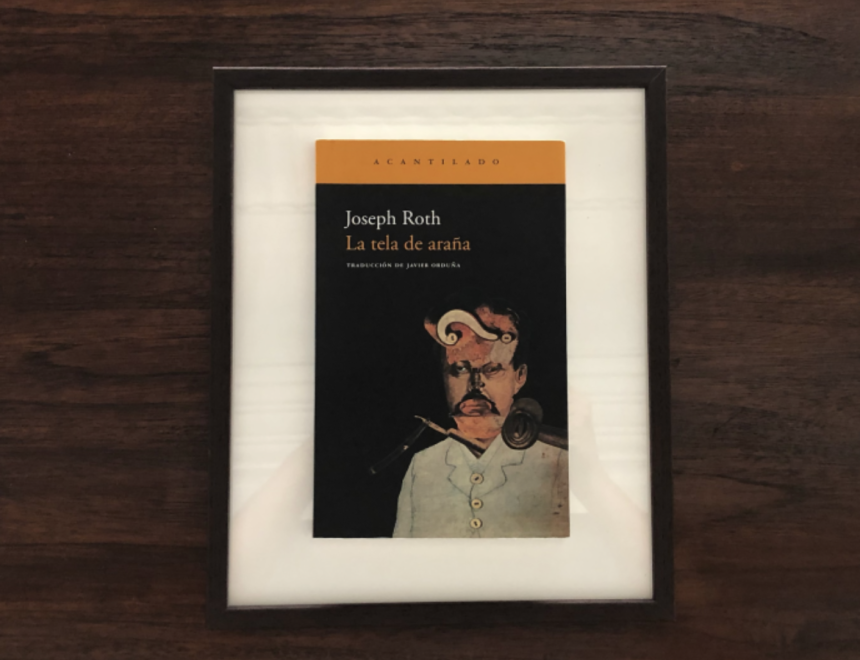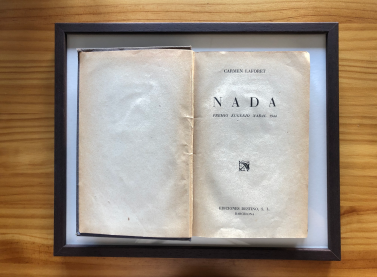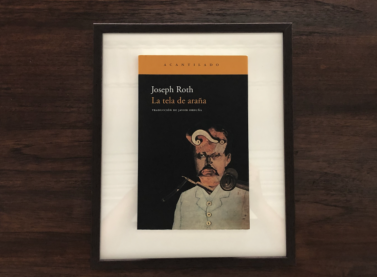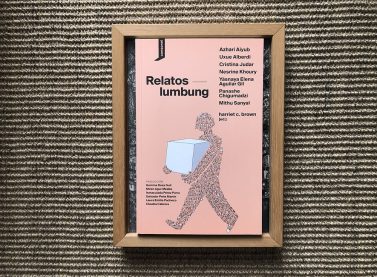El gesto narrativo
Literature inbetween a collection
The collection from IVAM is organised using six chronological and themed blocks which explain, with their own voice, the art developed from the beginning of the 20th century to the modern day. Perhaps not everything is as it is (or was), but it is everything that exists. Stories of the present – and those that come from far away but are updated in our present- should be told as a polyphony of voices and from contexts that make us sharpen our critical eye regarding their construction and relevance.
Over six sessions, using six books, we will delve into the narrative actions that literature offers us and we will link them together, sometimes with simple gestures and sometimes with more complex choreography, with the IVAM collection. The worlds of fiction build reality; they are reflective mirrors or transparent windows, but they always tell us what we are, or what we are eager to become, from our previous experience and towards our future possibility of transforming ourselves. In these narrative gestures, traversed by stories and lives, we will slow down.
El gesto narrativo
Six Wednesday sessions, from 18.00 to 19.30
2nd November and 14th November 2022
18th January, 15th February, 22nd March and 10th May 2023
Limited places. Recommended for interested individuals, send a brief letter of interest. Acceptance to the group involves attendance at all six of the sessions.
Working of the reading group: each participant should have read the book before they arrive. IVAM will have 5 copies available for those who are unable to buy it or to borrow. The location of each session will be provided in advance, depending on the book and the dynamic generated between the book and the section of the IVAM collection that it refers to.
1914-1939: Historic vanguards
«This period comprises from the First World War until the start of the Second, the same year in which the Spanish Civil War ended. IVAM possesses a significant collection of works belonging to historic European vanguards, especially from constructivism, dadaism, futurism, neoplasticism and non-figurative or concrete abstraction.»
—La tela de araña (1923) by Joseph Roth. Ed. Acantilado.
Wednesday, November 2, 2022, at 6:00 p.m.
1939-1961: Art in post-war Europe
«The twenty two years that make up this period, covering four decades, stand out for the consolidation of artistic movements such as European informalism or American abstract expressionism, together with new proposals of geometric abstract art, in a context framed by the long European post-war period and the hardest years of the Franco dictatorship.»
—Nada (1945) de Carmen Laforet. Eds. Austral, Cátedra.
Wednesday, December 14, 2022, at 6:00 p.m.
1962-1976: Irruptions of the image
«This period brings together artistic practices of a very diverse nature that debated between abstraction and figuration both in Europe and in the United States. They are practices based on a new configuration of time, space and perception, and new approaches around objects, gesture and action, of which the IVAM has a significant number of works.»
—El Benefactor (1945) by Susan Sontag. Eds. Debolsillo, Alfaguara…
Wednesday, January 18, 2023, at 6:00 p.m.
1977-1989: Transition and postmodernity
This period gave rise to some of the most daring phenomena of the late seventies, underlain by concepts which we can, almost academically, call “postmodern”. The IVAM itself functioned as a historically determined institutional threshold born of the thematically overexploited Spanish Transition, and a peculiar phenomenon specifically rooted in the fact of the Spanish Autonomic Regions. Certain artists appeared who intensified the use of photography as a concept rather than as a mere imprint or index, and we can trace the construction of new theories of the image, visual studies, and the new range of disciplines which, together with the artists themselves, were to reinterpret the role of different practices.
—Wittgenstein’s Mistress (1988) by David Markson, Dalgey Archive Press
(La amante de Wittgenstein, Trans. Mariano Peyrou, Ed. Sexto Piso).
Wednesday 15 February 2023, 18:00
1990-2001: Arts in a global world</strong>
This period saw the globalisation of contemporary art discourse and the phenomenon of the exhibition. In considering it, we must address the proliferation of exhibitions giving a voice to global “others”, and also take into account the conceptual shifts this necessarily led to in museum exhibitions. The complex demands of minority and subaltern majority identities must be taken into account, as well as the explosion of popular phenomena and the renewed discourses of feminism. New formats and materials also appeared, giving rise to hybrid categories of artistic genres in large installation formats. Abstraction also incorporated socially critical imagery and postcolonial discourses. The nineties also saw the birth of gender politics and many other non-hegemonic manifestations which began to permeate institutional collections and exhibitions.
— Lumbung Stories (2022), Azhari Aiyub et. al. ,Ed. harriet c. brown Incudes stories by Azhari Aiyub, Uxue Alberdi, Cristina Judar, Nesrine Khoury, Yásnaya Elena Aguilar Gil, Panashe Chigumadzi, Mithu Sanyal. Trans. Gemma Deza Guil, Miren Agur Meabe, Inmaculada Pérez Parra, Salvador Peña Martín, Laura Emilia Pacheco, Claudia Cabrera.Cassava Republic Press
(Relatos lumbung, VV AA. Edited by harriet c. brown. Ed. Consonni)
Wednesday 22 March 2023, 18:00
2002-2021: Forms of the contemporary
The most recent of the historical periods, with the closest relation to the present day, offers us several lines of thinking on prospective projects focusing on the early decades of the twenty-first century. With this in mind, we can tackle the many ways of imagining the revolt, the performative phenomenon of the protest as a sociological staging which also relates to the iconography of nineteenth- and twentieth-century art. Actions and interventions in different contexts may mesh with some of the aims of feminist and queer activism, or the conflicts of globalism in its inequality, current forms of communication and the new awareness of crisis as a global phenomenon. Contemporary art is now postconceptual, its meanings are open, it has recuperated the document, narrative, and embodied practices through performance and the use of the word.
—The Most Secret Memory of Men (2023) by Mohamed Mbougar Sarr, Other Press
(La más recóndita memoria de los hombres, de Mohamed Mbougar Sarrgar Sarr, Trans. Rubén Martín Giráldez. Ed. Anagrama).
Wednesday 10 May 2023, 18:00






